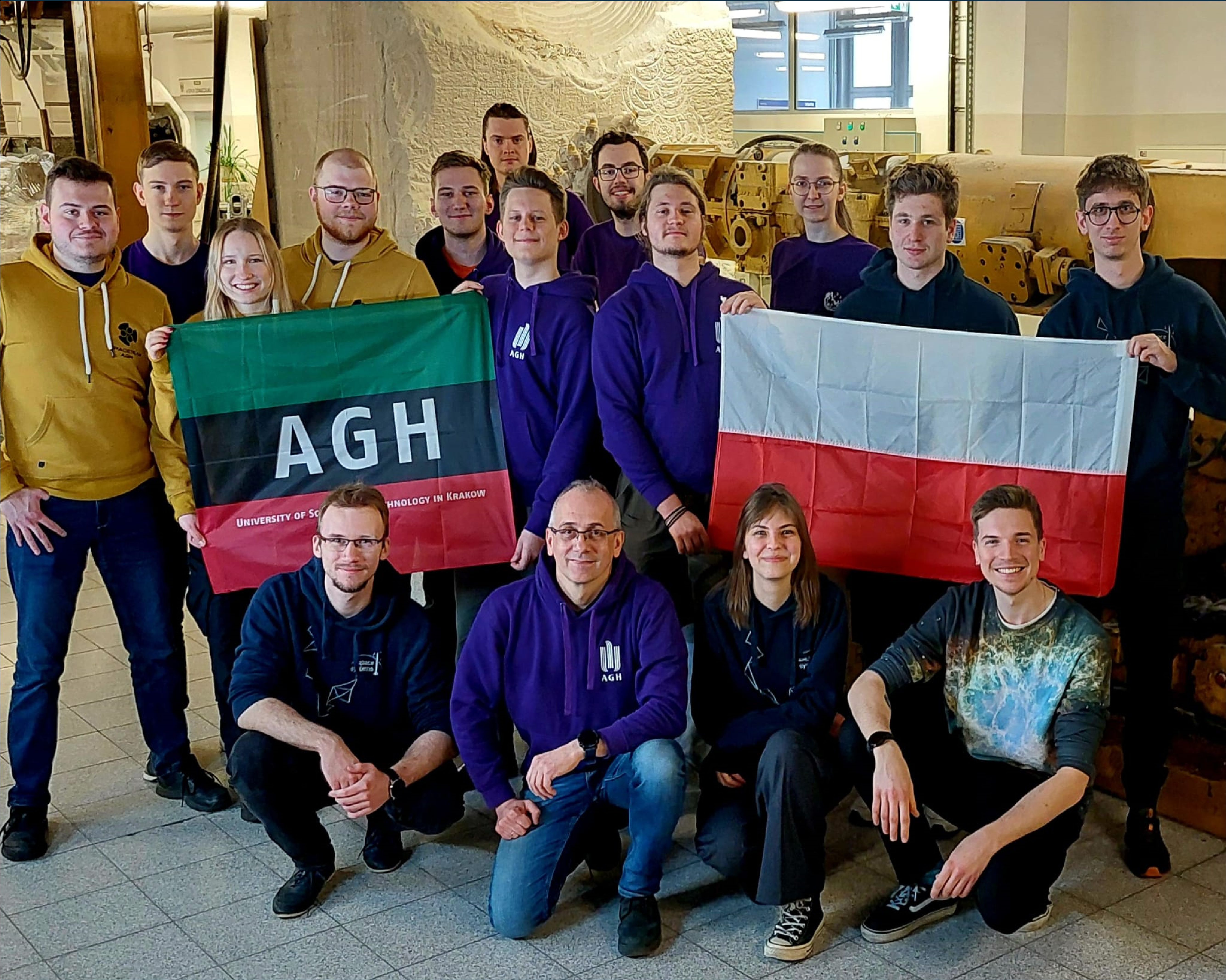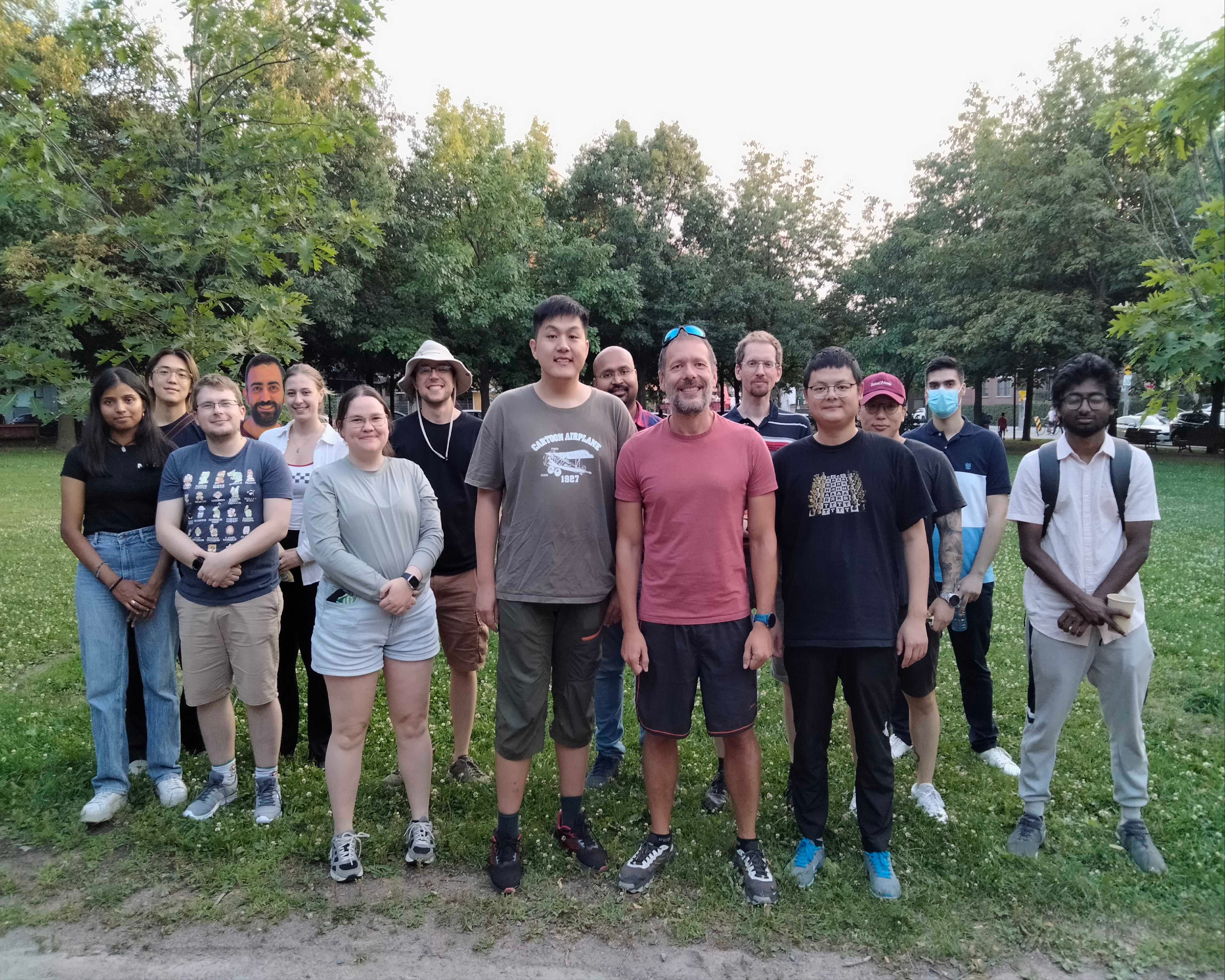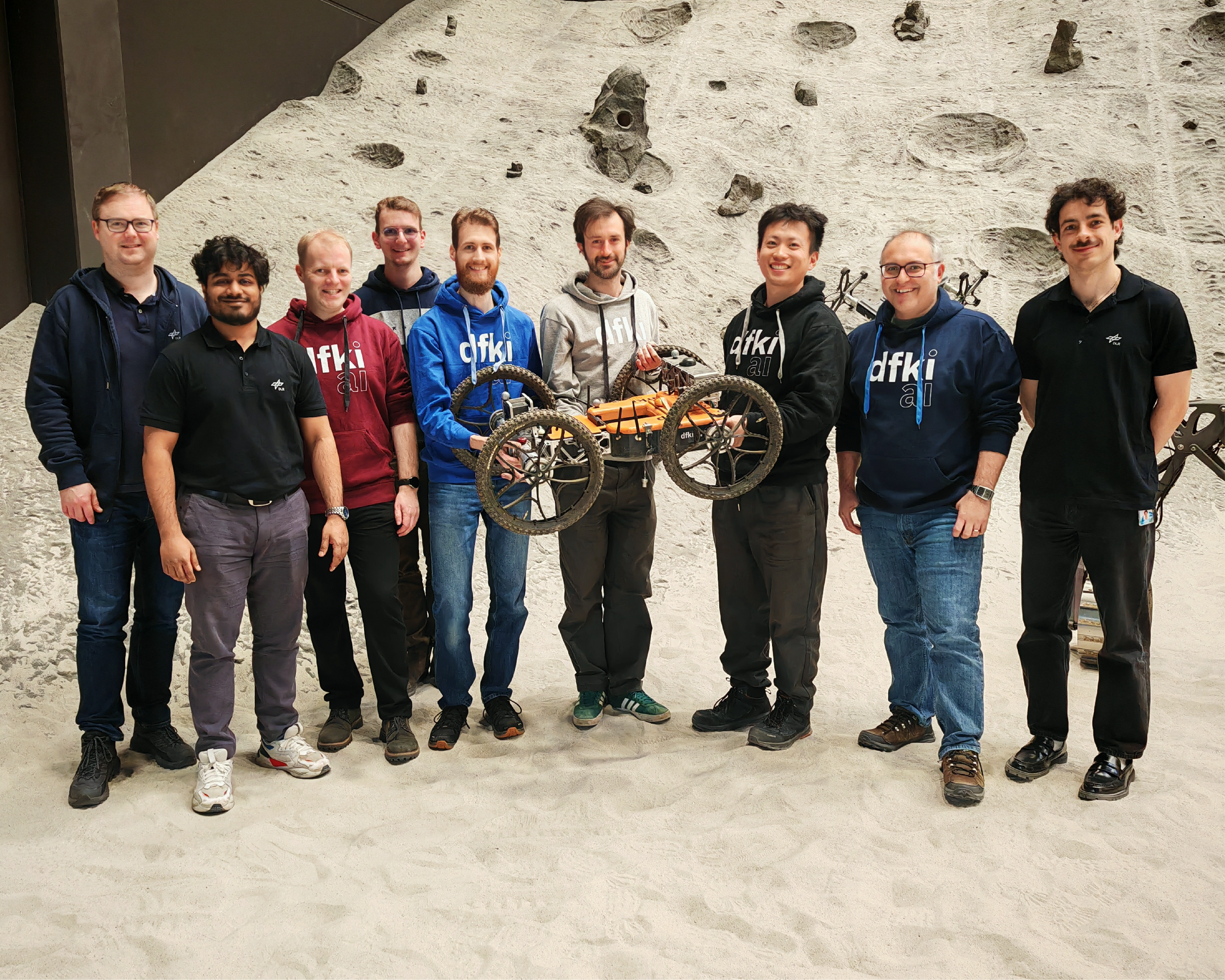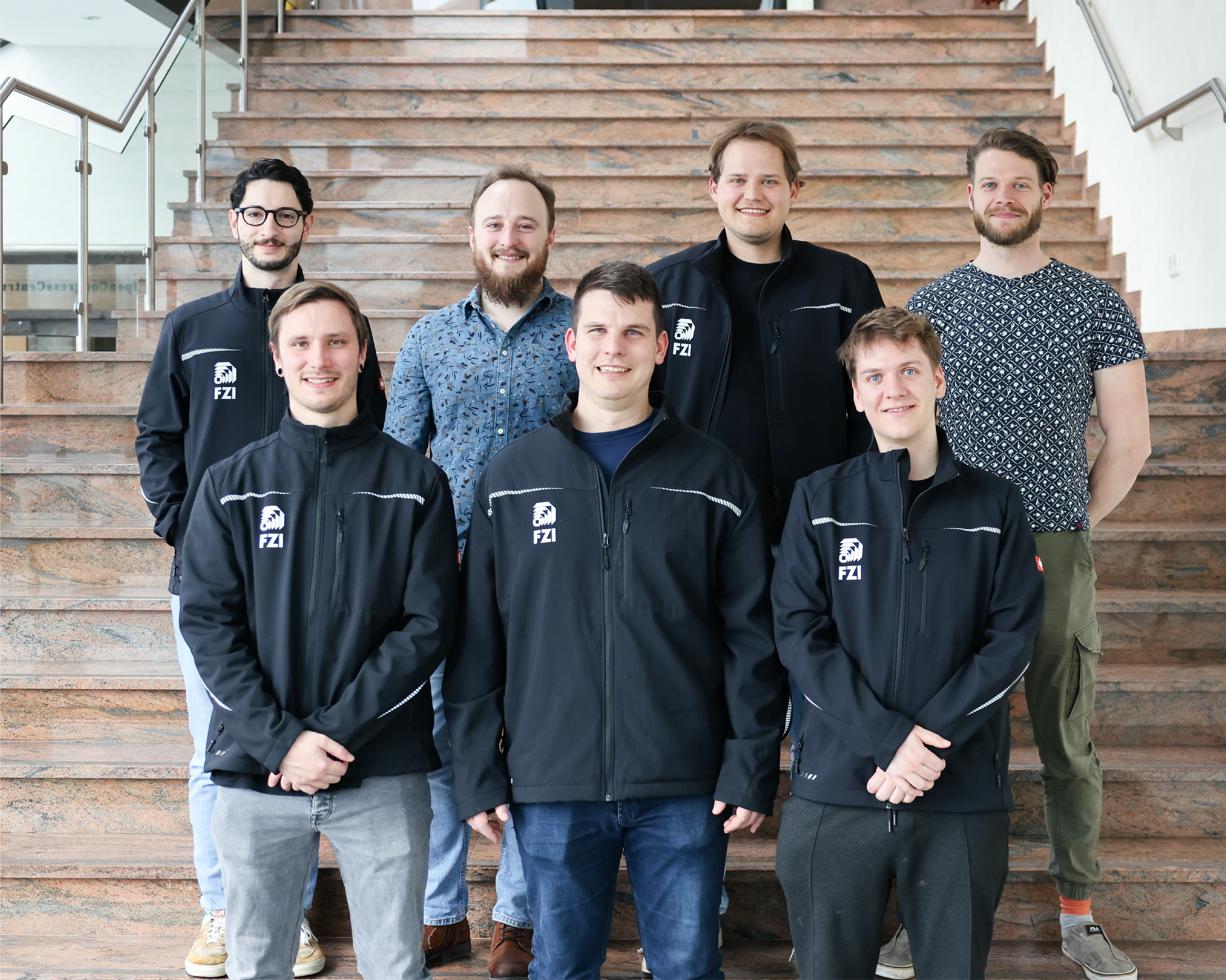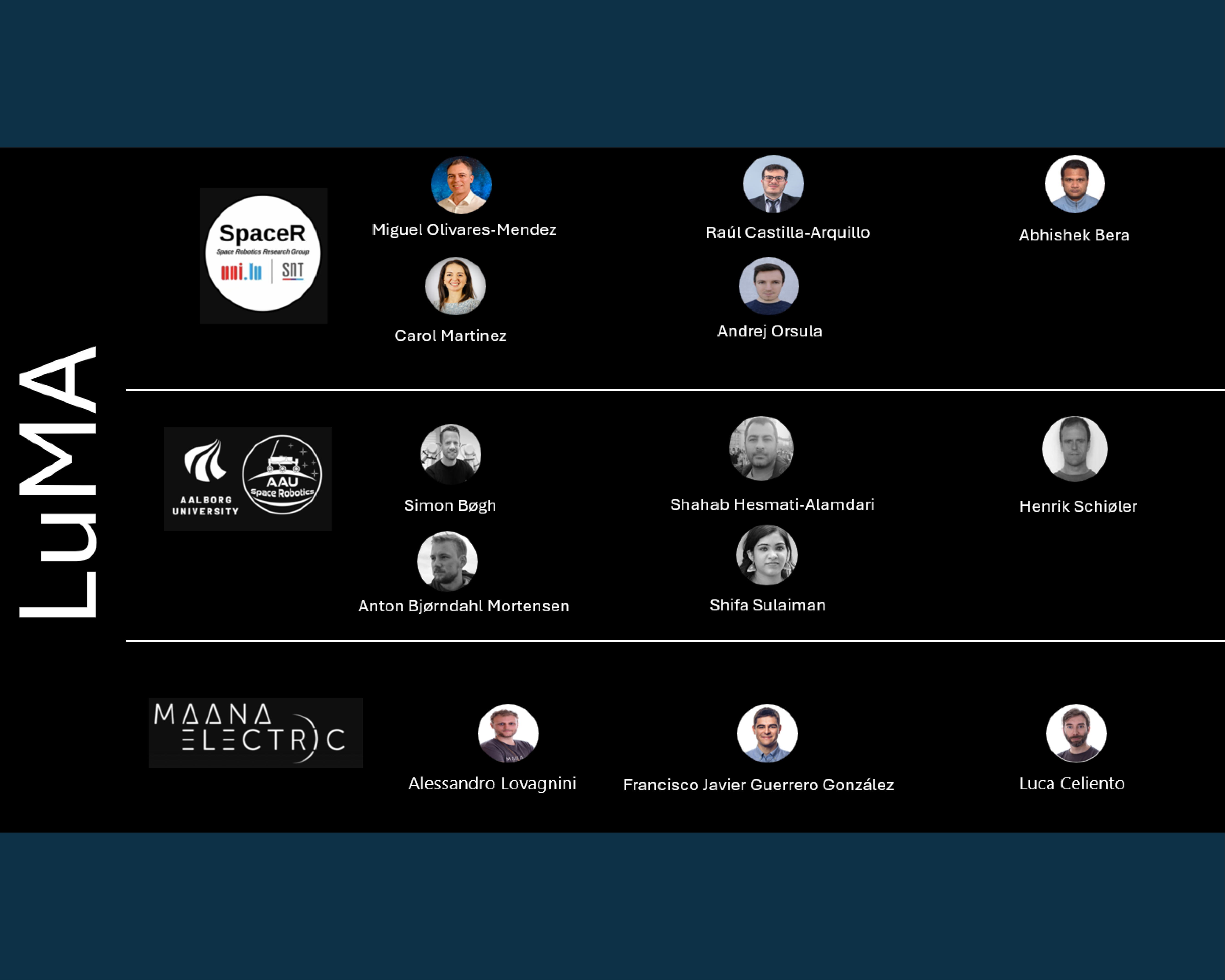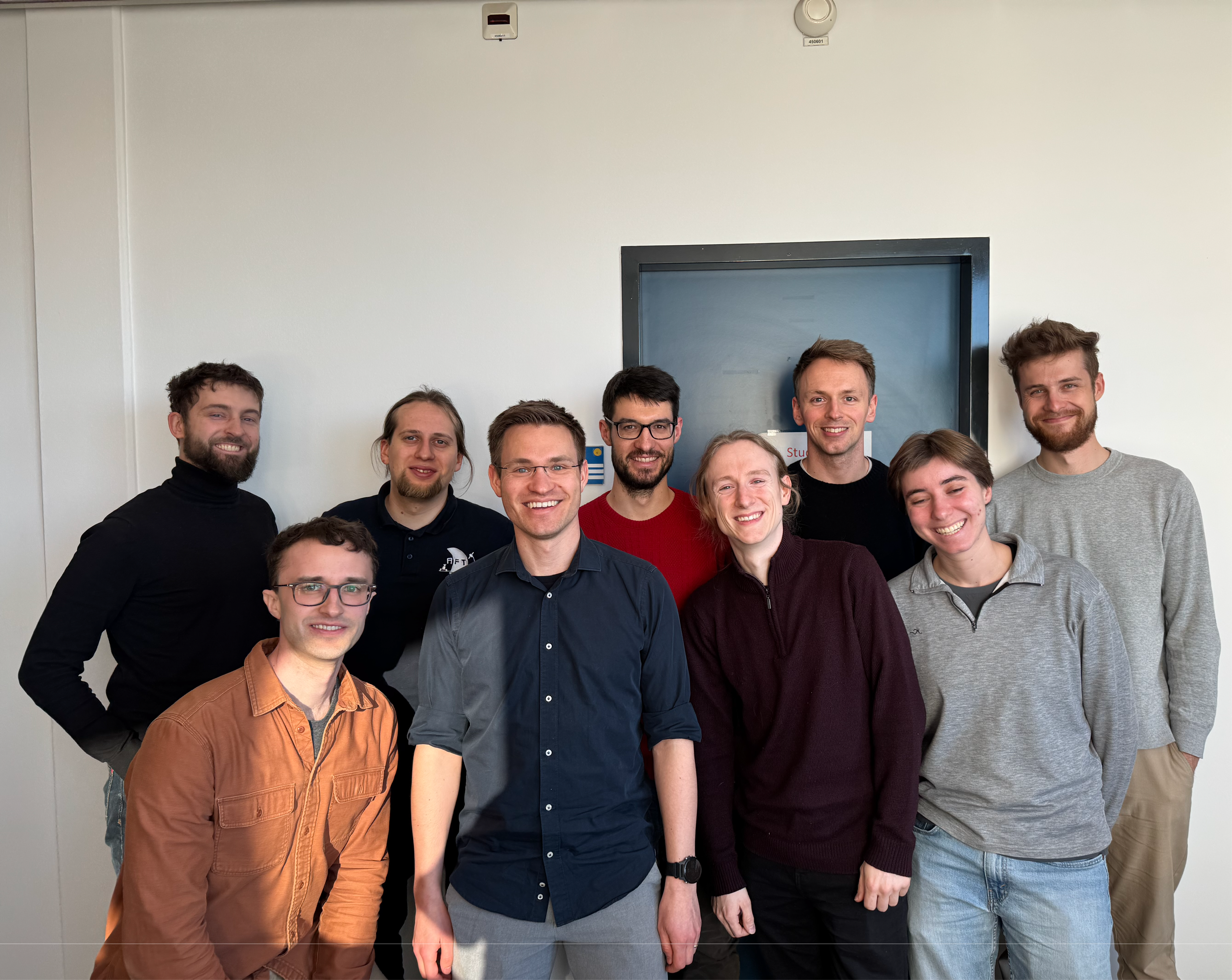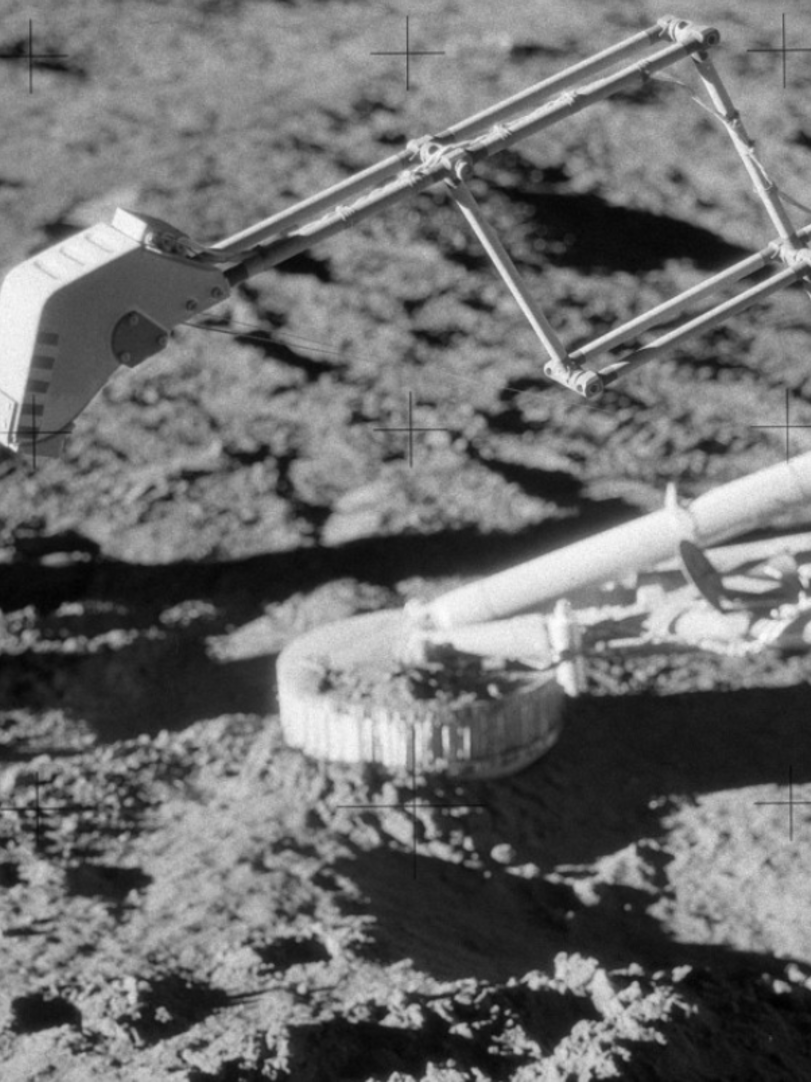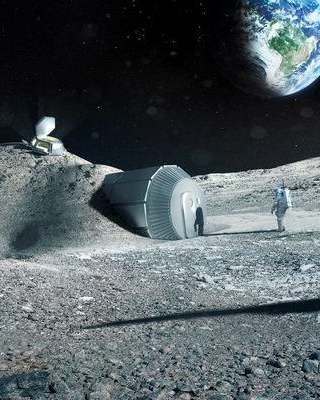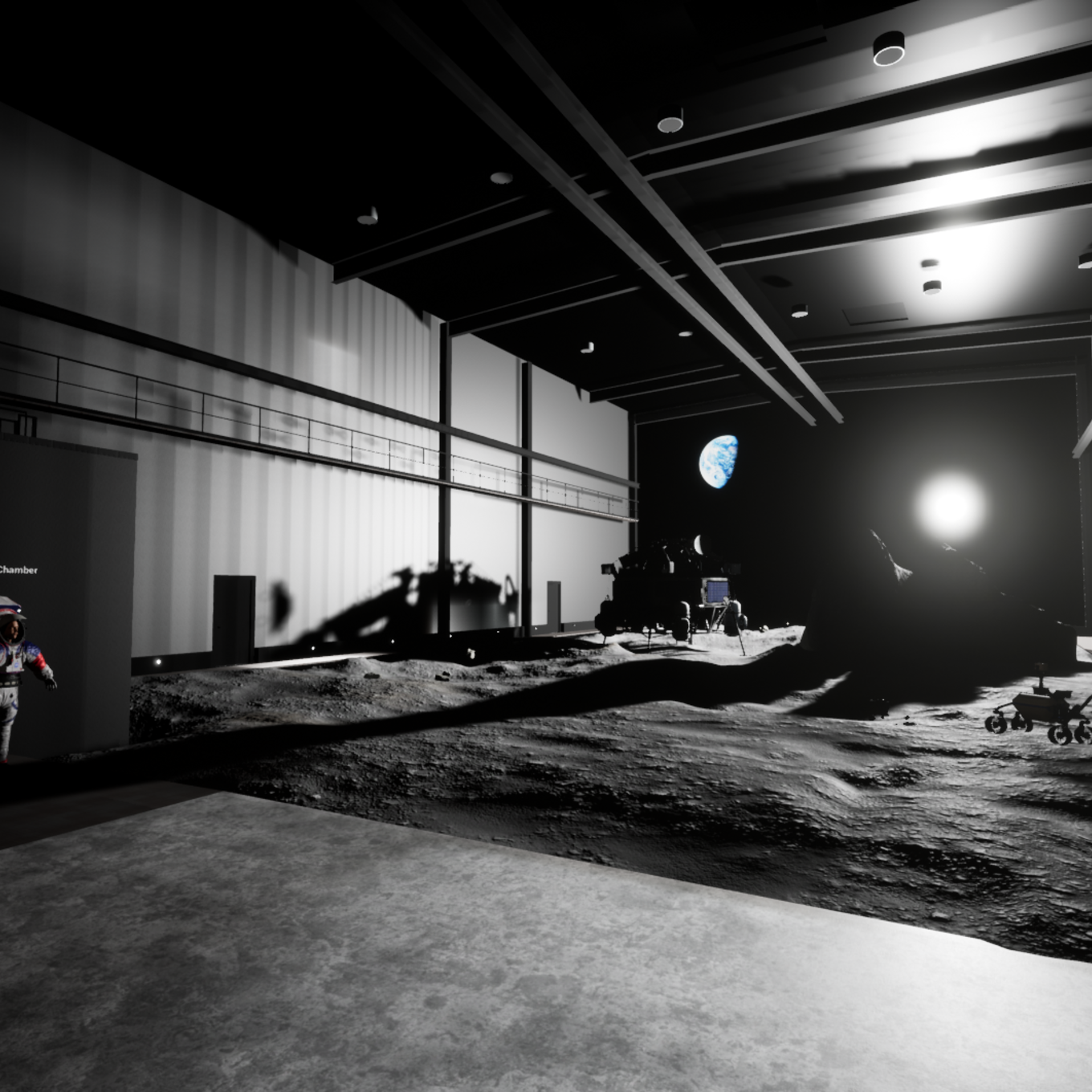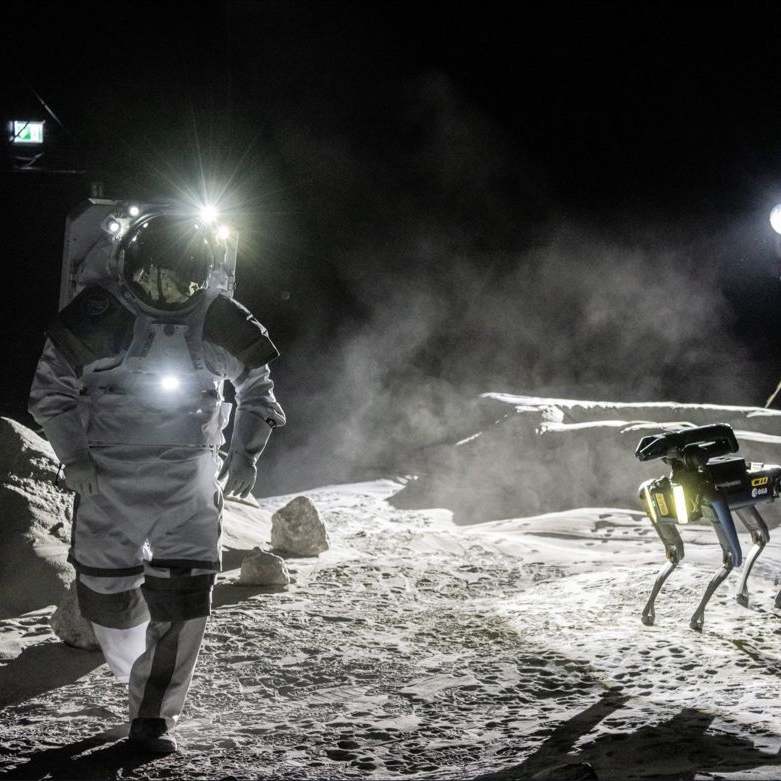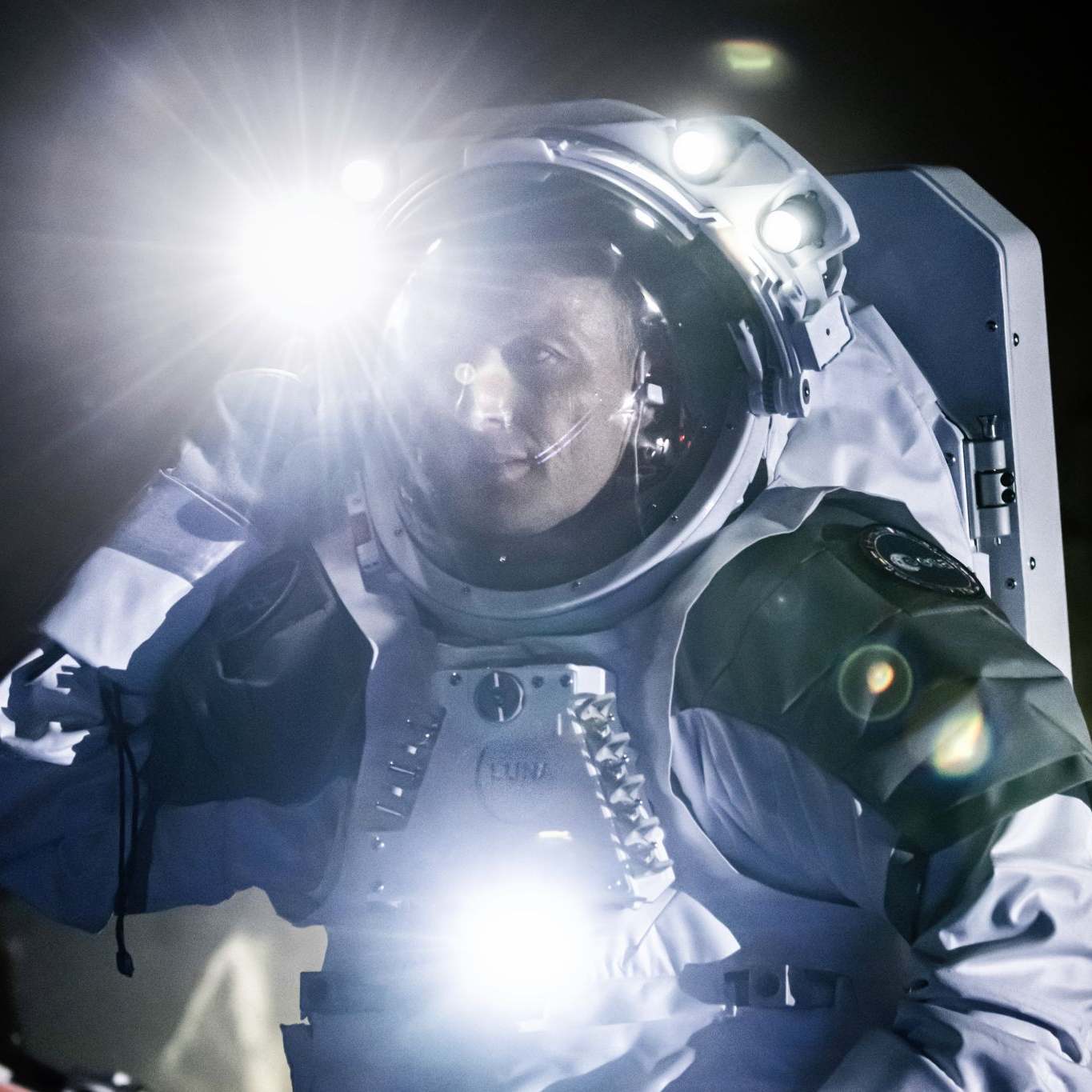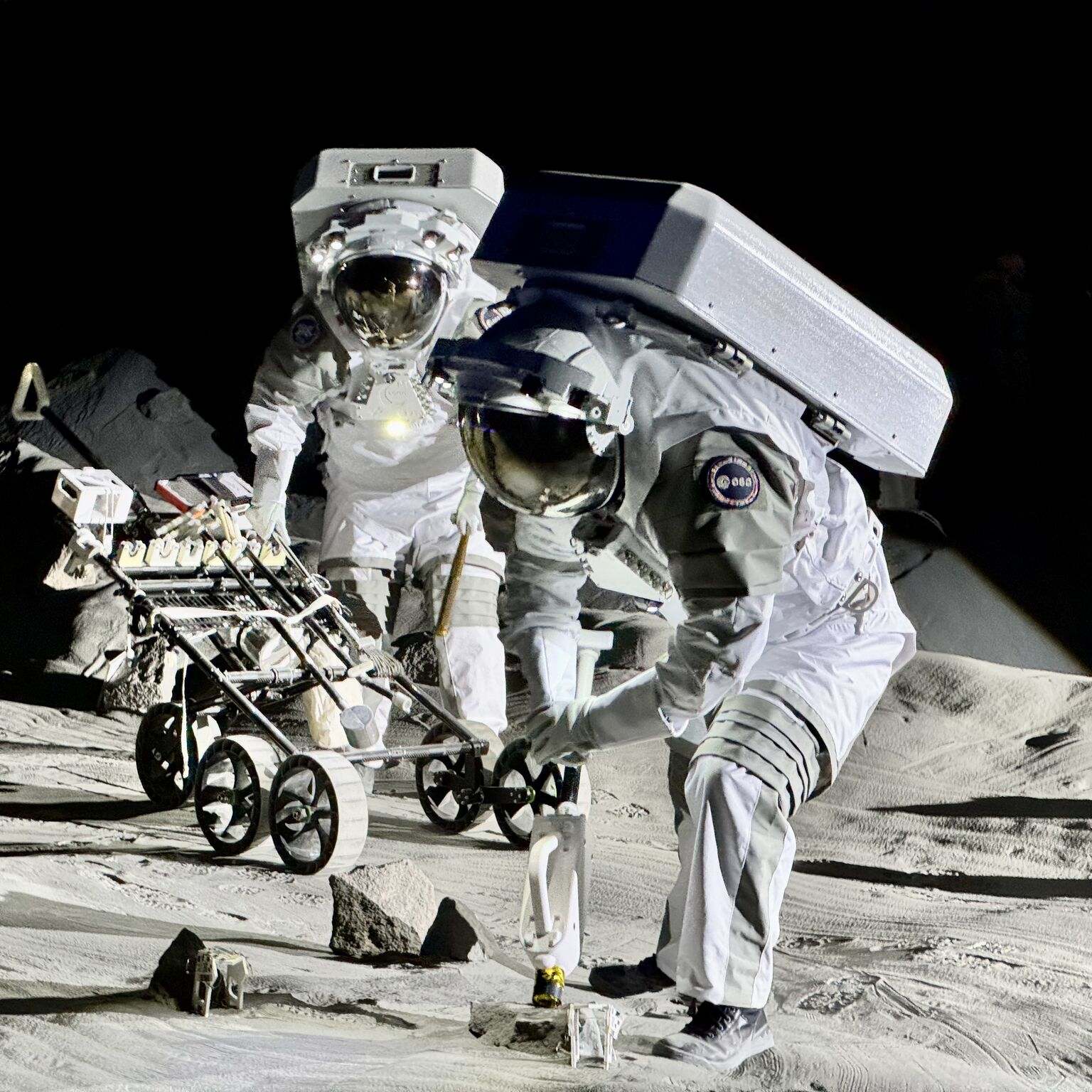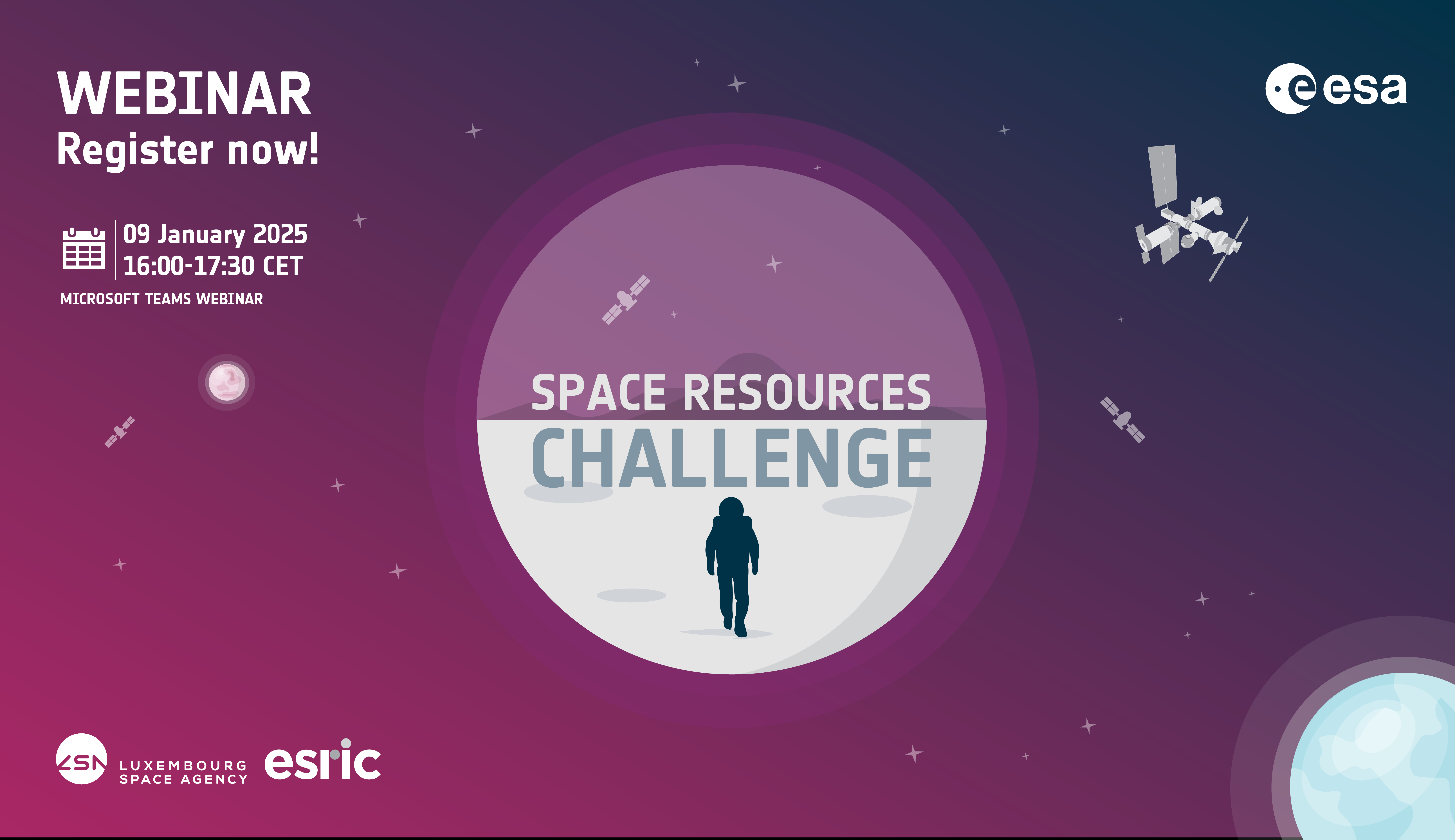Collection and Processing of Lunar Regolith
The field test of the 2nd Space Resources Challenge is now over. Congratulations to all the teams!
Congratulations Team BREMEN, winners of the €500,000 ESA Prize!
Watch the 2nd Space Resources Challenge Aftermovie (Credits: ESRIC)
Prize up to €750k
Team BREMEN has been rewarded a with €500,000 development contract for a feasibility study with ESA. The best performing team in the Beneficiation category will be rewarded with up to €250,000 by the Luxembourg Space Agency (LSA) & ESRIC (will be announced at later stage).
700m²
Lunar Analogue Terrain
2
Prizes
€750k
Total Potential Gain
Meet the 8 teams!
Team AGH Lunar Resources Initiative
The Second Space Resources Challenge
The focus of the Second Space Resources Challenge is Excavation & Beneficiation.
Excavation refers to the collection, hauling, and handling of lunar regolith prior to processing. In terrestrial mining, excavation refers to the process of removing earth, rock or other materials from a mine site to extract valuable minerals.
The term Beneficiation is adapted from the terrestrial mining industry and refers to any process that improves the economic value of an ore by removing the gangue minerals, resulting in a higher-grade product. In the context of ISRU, beneficiation, also referred as feedstock preparation, can include processes such as particle size separation or mineral enrichment methods to isolate an improved feedstock for the next step in the process.
Mission Scenario
It is the 2040s. Operations to sustain a long-term human presence on the Moon’s surface using lunar resources have begun. End-to-end ISRU processes have been demonstrated in-situ via robotic and crewed missions and small-scale production of ISRU products such as oxygen and metals has begun. Integrated systems to extract, process, and store raw lunar resources and end-products are in place, including the infrastructure enabling early use cases for regolith (i.e., additive manufacturing for construction) and oxygen (i.e., refuelling capability).
Astronauts, partially dependent on in-situ resources for breathing, shelter, and space travel, typically stay on the Moon for periods of up to 30 days to conduct scientific experiments but also to maintain the ISRU infrastructure, such as the oxygen extraction plant. Despite the need for frequent resupply missions and repairs, the ISRU facilities operate autonomously, even between missions.
As a team, your main objective is to collect regolith and prepare it for further processing using size-sorting methods only. You will need to produce a feedstock with a particle size distribution specifically tailored to optimise the molten salt electrolysis process, an oxygen extraction method. Your task is to provide enough oxygen to sustain eight astronauts during a 30-days mission at Moon’s South Pole.
Our Partners
Challenge Partner
The Luxembourg Space Agency (LSA) and the European Space Resources Innovation Centre (ESRIC) will award the Beneficiation prize. The best performing team in this category will win up to €250,000 in the form of a development contract.
LUNA
The Second Space Resources Challenge, ”Collecting and Processing Lunar Regolith”, is set to take place at LUNA, the newly inaugurated facility designed to prepare future astronauts for lunar missions. This state-of-the-art facility, spanning over 700m², will replicate eventually the challenging environment of the moon with realistic lighting conditions, simulated lunar gravity. Participants will be tasked with designing and operating robotic systems capable of collecting and sorting lunar regolith simulant.
Watch the replay of our informational Webinar here!
Q&A from the Webinar
The regolith depth in the hall is between 60cm and 3m – the 3m depth is in a specific area known as the deep floor zone. Properties of the EAC-1 material is publicly available but we can also field specific questions and see if we have the data/answer in house.
The LUNA testfield can be modified to simulate craters up to approximately 2.5m in depth. Some slopes could be anticipated during the test, but this is at the discretion of the challenge organisation team.
Two light conditions may be used for the challenge. At LUNA we have a single spot light source that can be used to create low-angle polar type lighting. Additionally, the hall has a main roof light source that we use when not simulating any light conditions. The challenge organisation team will make a decision on the light to be used.
Direct teleoperation from the control room will be in place without any delay.
It is largely loose, but some compaction has occurred over the usage of the field to date. We will pre-garden the upper layers before the test day to reduce compaction due to walking on the surface, etc.
The area of this zone still needs to be defined. There is a concrete apron that is in front of the main regolith test field. It is commonly used to place equipment there before loading it onto the test field.
Teams are free to decide to deliver the beneficiated regolith wherever they want. However, assuming human activities in the starting area and the hypothetical pilot plant, it would be preferable to bring the beneficiated materials back.
Teams will compete one by one during the filed test (no overlapping of teams and no possibility to view what the other teams are doing). According to the timeline, the facility will be used for 5 days in total. Considering we will be running 2 teams a day, a total of 10 teams will be qualified after the OSIP call.
Yes, the field can be accessed during the test – the LUNA team will support this and participants can access the field, however this will only be permitted in the context of the competition rules, e.g. with the use of a golden ticket.
Small quantities of EAC-1 can be made available for those who wish to use it for testing.
We are looking for a light proposal, so we can understand how you approach the problem and what is the hardware that you already have. Of course, if you have more hardware at your disposal that shows that you are closer to implement the testfield than other competitors. And also, if you are realising CAD, you will need some form of technical details that will allow you to create that model. So the technical detail is important because it will be what we are judging you on and not just the video. The video is an introduction, an ability to see what you are capable of, what you have done already and what you are planning to do in the future.
We are not including any requirements on autonomy because the risk would be that the autonomy parts, which is rather complex, could overtake the actual hardware development, which at this moment in time from the beneficiation point of view, we are much more interested. We envisage that the robots will be guided remotely using the visual Offered by the Mobility platform and we might complement with further imaging.
We don’t have a preference on how the system will be handled, it could be a machine that handle everything or a rover plus other platforms. The idea is that we will be looking at who can achieve the separation that we want with the mass and power that we have given. When the task is completed, we will then check who done best in terms of performance. The architecture is open to any interpretation possible.
There is no time requirements regarding the length of the video as long as it contains the elements required mentioned in the OSIP call and in the Rule Book.
You can still modify your submission, and therefore the design of the solution once you have submitted on OSIP as long as the deadline for evaluation has not been reached. We will be looking at the proposal on paper, but also on the hardware, on the field. So if you have been allowed to go through on a certain design, there will be a a strong requirement of understanding why the the system has been completely changed. For smaller modification that can be accepted.
The Challenge is open to entities within ESA’s European Exploration Programme (E3P) states: Austria, Belgium, Canada, Czech Republic, Denmark, Estonia, Finland, France, Germany, Greece, Hungary, Ireland, Italy, Latvia, Luxembourg, Netherlands, Norway, Poland, Portugal, Romania, Slovenia, Spain, Sweden, Switzerland and United Kingdom.
The IP will be handled as part of the contract in the ITT and the provisions are the one of the normal contracts in which ESA doesn’t take ownership of the inventors IP. It will remain with the solution provider, provided that any IP that is generated as part of the contract will be available for use to ESA.
The final partner has be known when the projects start. In your proposal you need to have a partner. If afterwards there is a slight change, that will be done in a negotiation in the formal proposal.
Each box will be weighed to assess the total beneficiated mass, and samples from each box will be taken and analysed using a mastersizer. From this, ESA will evaluate the percentage of regolith within the specified range for each box. Bonus/penalty points will then be applied according to the rulebook.
Weighing stations will be available around the filed test but teams are encouraged to include their own system for measuring this data. Measurement time will be included as part of the 2h30 of the field test.
The Challenge team is still working on the best way and tools to evaluate this criterion. The overall idea is to split the field test into different zones (area of each zone is tbd) and allow a certain amount of dust generation per zone. The further you are from the starting area, the least you will be penalised as your impact on the human activities will be reduced. However, going further to maximise points in this category will increase your energy consumption so we are asking teams to do a trade-off in order to maximise points in general.
We will not be able to simulate any condensed gas in the lunar regolith. The excavation will be monitored in terms of dust emission.
EAC-1 simulant particle size distribution is ranging from 0.1 um to 1000 um. hence anything above 500 um (box 2) will be in the 500 and 1000 um interval as mentioned in the rule book.
Hard to give an absolute figure here – simulant material is usually non-homogenous across larger batches owing to its geological origin. Our tests have shown that EAC-1 is largely represented well by previously published particle size data.
The total mass should not exceed 60kg. This include all assets of the team except the boxes for the beneficiated regolith.
Design and shape of the boxes are up to the team as long as the beneficiated regolith can be accessible for sampling.
Yes, as long as the total mass of the system does not exceed 60kg. Pay attention as well to the energy factor. The more powered systems you will have, the more energy consumption may be required and exponential penalty points can be applied if you overcome the 300Wh limit.
With this challenge, we are working extensively in establishing some capacity in producing oxygen and metals using regolith and using, in particular molten salt electrolysis. Other processes are not considered as part of this challenge for the time being.
And this is why we have selected the particle size distribution that we have selected for other processes (3D printing, building infrastructures…), where other particle sizes will make more sense.

